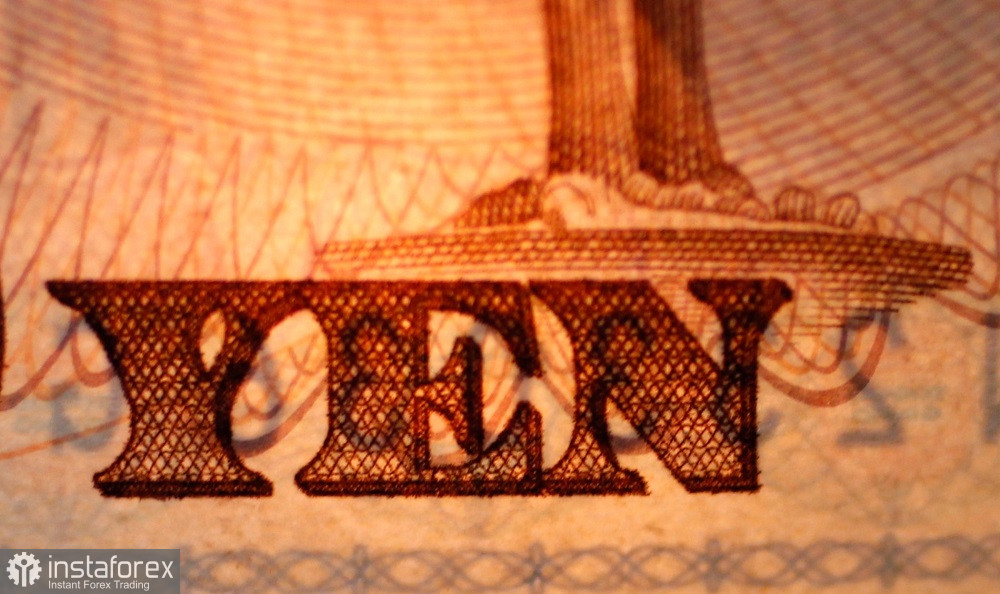The USD/JPY pair hit a new 3.5-month low on Thursday, falling to the base of the 135th figure. Traders reacted to the sudden change in the fundamentals. For the first time in a long time, the yen received support from the Bank of Japan. So far it's a verbal support, but it is "worth a lot".
It really is an extraordinary event: the Japanese central bank has been consistently implementing accommodative policy for many years, while voicing the appropriate rhetoric. Even this year, when central banks around the world have tried (and are still trying) to curb inflation by raising rates, the BOJ with manic tenacity still keep rates at the same level, while allowing further easing of monetary conditions. Traders haven't reacted to the dovish rhetoric of the head of the Japanese central bank and his colleagues for a long time, partly because it hasn't changed much over the years. Many currency strategists have repeatedly voiced the idea that revolutionary changes can only happen after BOJ Governor Haruhiko Kuroda leaves his post: his second term expires in April 2023, re-election is impossible.

Given this background, we shouldn't be surprised by traders' reaction, who heard hawkish signals from the representative of the Japanese central bank for the first time in a long time. Asahi Noguchi said the BOJ is ready to withdraw its stimulus if inflation rates are "too high". He called this step a "preventive measure" to curb inflationary growth.
It's worth noting that inflation in Japan has been above the central bank's 2% target level for several months. But Kuroda has been persistently ignoring this fact all this time. He has repeatedly stated that the central bank needs to create conditions for "sustainable inflation" in the economy, while the increase in the growth rate of the consumer price index this year "is due to isolated factors, such as the rise in energy prices".
And here the question arises: what level of inflation will motivate members of the BOJ to apply "preventive measures"? For example, the latest inflation report reflected a record rise in key indicators. Specifically, Japan's overall consumer price index rose 3.7%, the strongest rate of growth for the indicator since 1982. The core CPI, which does not include fresh food, but includes energy prices (petroleum products), also broke a 40-year record. The Consumer Price Index, which excludes food and energy prices, jumped 2.5% year on year in October.
This report did not help USD/JPY bulls, despite the jump in major indicators. What is considered a "red line" for the BOJ? We still don't know the answer - at least, Noguchi left it out of his speech.
The USD/JPY fell also due to the dollar's weakening. Bad news for dollar bulls: the core PCE index, which is known to be a favorite inflation indicator of the Federal Reserve, was in the red zone. Thus, the growth rate of annual core PCE inflation in the US slowed to 5% in October. In monthly terms, the indicator came out at 0.2% (with a forecast of 0.3% growth).
And another troubling signal for the dollar: the ISM Manufacturing PMI for the U.S. fell to 49 points in November from a forecast of 49.8 points. The structure of the release suggests that the paid price component of the index collapsed to 43 from 46.6, the employment index fell to 48.4 from 50, and the new orders index fell to 47.2 (from 49.2).
The result was not long in coming: the greenback is now under pressure all over the market. The US dollar index continues to plunge, testing the 104th figure at the moment.
Thus, the prevailing fundamental background contributes to the pair's further decline in the medium term. In the near future, traders will play out Noguchi's statement, despite the remaining issues, so to speak, of "practical nature". Of course, Kuroda might contradict Noguchi's statement (for instance, saying he voiced his opinion and not the central bank's), but until that happens, the yen will be "skimming the cream".
Technically speaking, on the daily chart, the pair is between the middle and bottom lines of the Bollinger Bands indicator and below all of the Ichimoku lines, indicating that you should prioritize short positions. The main target of the bearish movement is 134.50, which corresponds to the bottom line of the Bollinger Bands on the D1 timeframe.
 English
English 
 Русский
Русский Bahasa Indonesia
Bahasa Indonesia Bahasa Malay
Bahasa Malay ไทย
ไทย Español
Español Deutsch
Deutsch Български
Български Français
Français Tiếng Việt
Tiếng Việt 中文
中文 বাংলা
বাংলা हिन्दी
हिन्दी Čeština
Čeština Українська
Українська Română
Română

